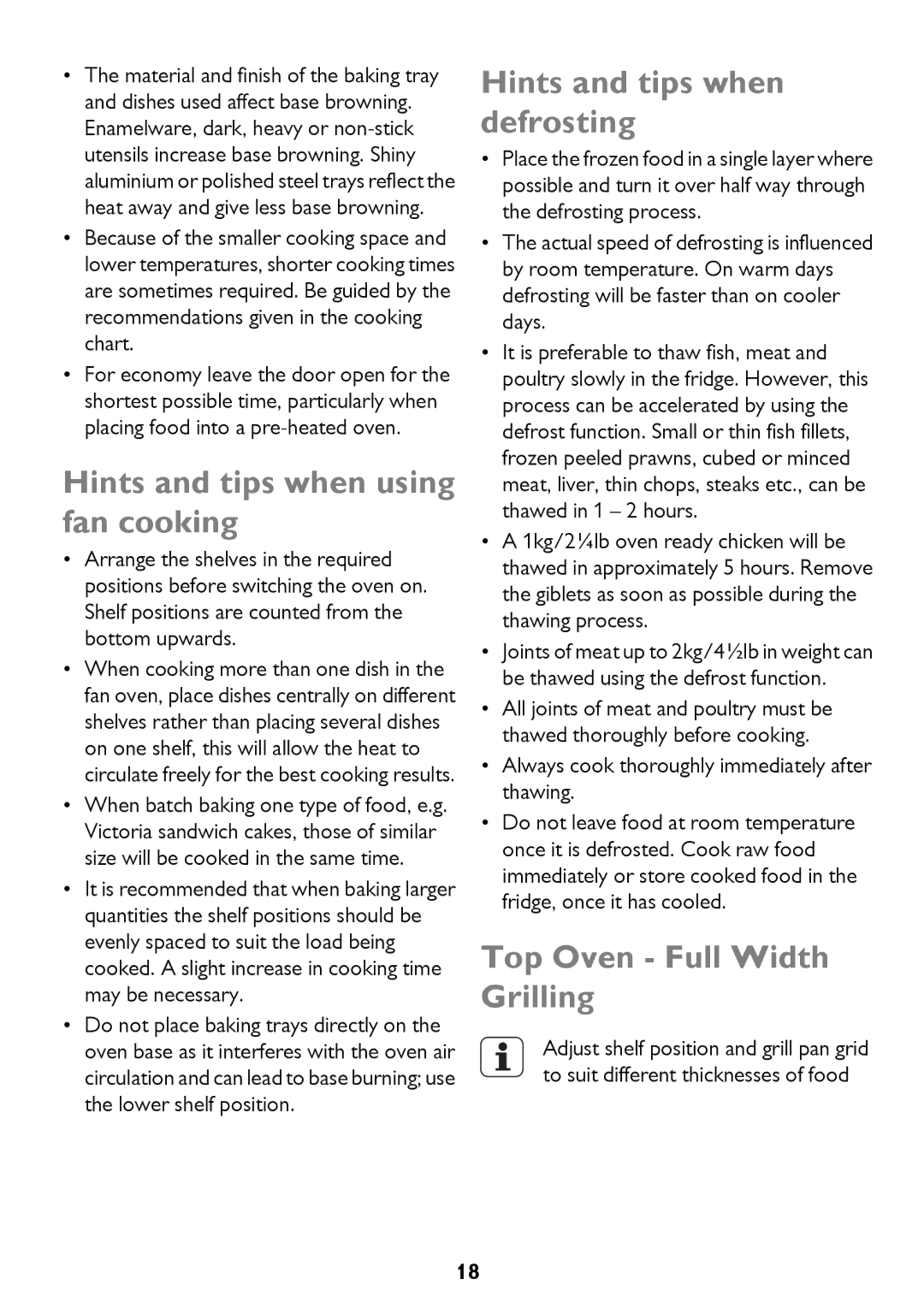•The material and finish of the baking tray and dishes used affect base browning. Enamelware, dark, heavy or
•Because of the smaller cooking space and lower temperatures, shorter cooking times are sometimes required. Be guided by the recommendations given in the cooking chart.
•For economy leave the door open for the shortest possible time, particularly when placing food into a
Hints and tips when using fan cooking
•Arrange the shelves in the required positions before switching the oven on. Shelf positions are counted from the bottom upwards.
•When cooking more than one dish in the fan oven, place dishes centrally on different shelves rather than placing several dishes on one shelf, this will allow the heat to circulate freely for the best cooking results.
•When batch baking one type of food, e.g. Victoria sandwich cakes, those of similar size will be cooked in the same time.
•It is recommended that when baking larger quantities the shelf positions should be evenly spaced to suit the load being cooked. A slight increase in cooking time may be necessary.
•Do not place baking trays directly on the oven base as it interferes with the oven air circulation and can lead to base burning; use the lower shelf position.
Hints and tips when defrosting
•Place the frozen food in a single layer where possible and turn it over half way through the defrosting process.
•The actual speed of defrosting is influenced by room temperature. On warm days defrosting will be faster than on cooler days.
•It is preferable to thaw fish, meat and poultry slowly in the fridge. However, this process can be accelerated by using the defrost function. Small or thin fish fillets, frozen peeled prawns, cubed or minced meat, liver, thin chops, steaks etc., can be thawed in 1 – 2 hours.
•A 1kg/2¼lb oven ready chicken will be thawed in approximately 5 hours. Remove the giblets as soon as possible during the thawing process.
•Joints of meat up to 2kg/4½lb in weight can be thawed using the defrost function.
•All joints of meat and poultry must be thawed thoroughly before cooking.
•Always cook thoroughly immediately after thawing.
•Do not leave food at room temperature once it is defrosted. Cook raw food immediately or store cooked food in the fridge, once it has cooled.
Top Oven - Full Width Grilling
Adjust shelf position and grill pan grid to suit different thicknesses of food
18
